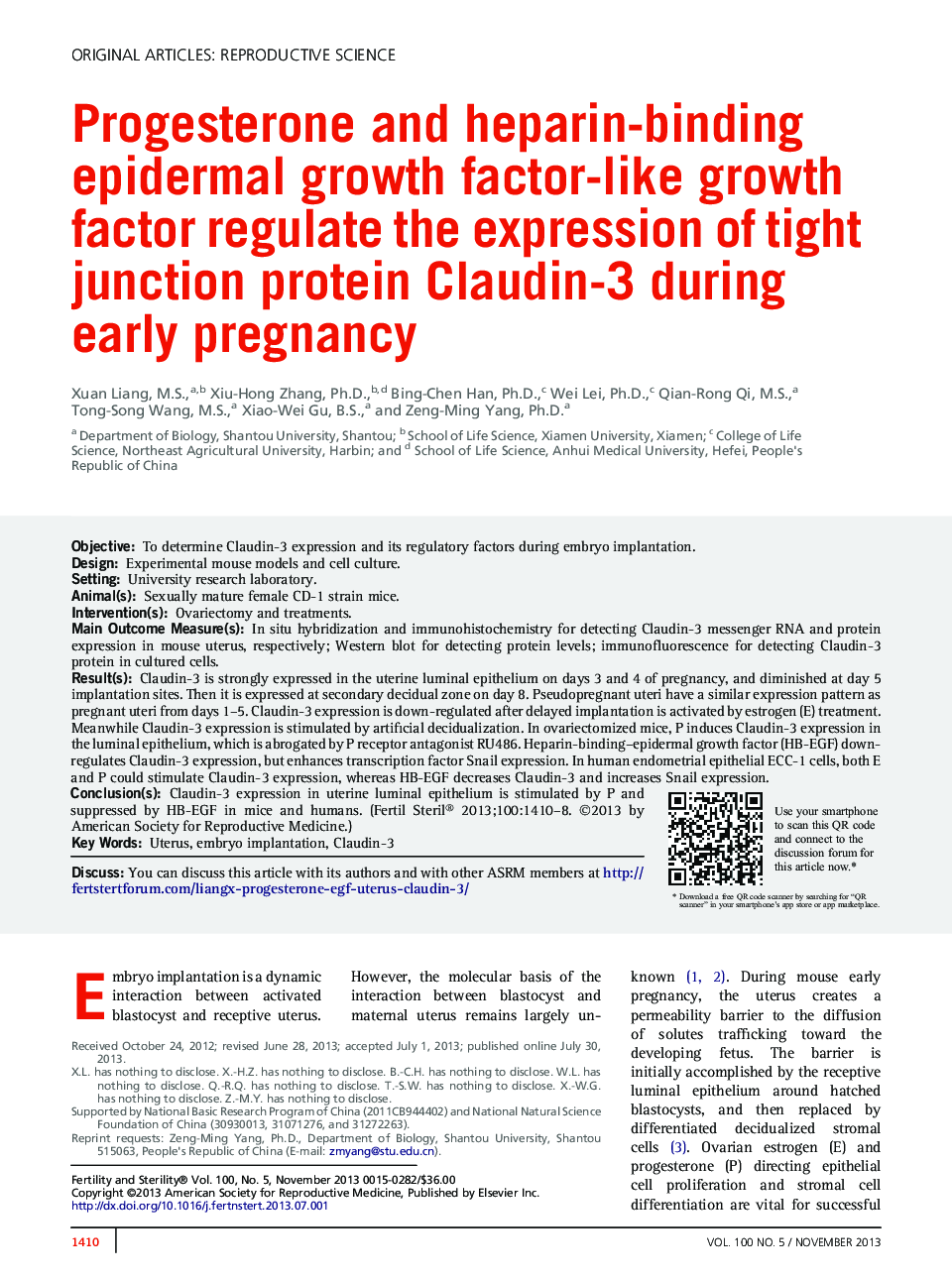| Article ID | Journal | Published Year | Pages | File Type |
|---|---|---|---|---|
| 3938788 | Fertility and Sterility | 2013 | 9 Pages |
ObjectiveTo determine Claudin-3 expression and its regulatory factors during embryo implantation.DesignExperimental mouse models and cell culture.SettingUniversity research laboratory.Animal(s)Sexually mature female CD-1 strain mice.Intervention(s)Ovariectomy and treatments.Main Outcome Measure(s)In situ hybridization and immunohistochemistry for detecting Claudin-3 messenger RNA and protein expression in mouse uterus, respectively; Western blot for detecting protein levels; immunofluorescence for detecting Claudin-3 protein in cultured cells.Result(s)Claudin-3 is strongly expressed in the uterine luminal epithelium on days 3 and 4 of pregnancy, and diminished at day 5 implantation sites. Then it is expressed at secondary decidual zone on day 8. Pseudopregnant uteri have a similar expression pattern as pregnant uteri from days 1–5. Claudin-3 expression is down-regulated after delayed implantation is activated by estrogen (E) treatment. Meanwhile Claudin-3 expression is stimulated by artificial decidualization. In ovariectomized mice, P induces Claudin-3 expression in the luminal epithelium, which is abrogated by P receptor antagonist RU486. Heparin-binding–epidermal growth factor (HB-EGF) down-regulates Claudin-3 expression, but enhances transcription factor Snail expression. In human endometrial epithelial ECC-1 cells, both E and P could stimulate Claudin-3 expression, whereas HB-EGF decreases Claudin-3 and increases Snail expression.Conclusion(s)Claudin-3 expression in uterine luminal epithelium is stimulated by P and suppressed by HB-EGF in mice and humans.
